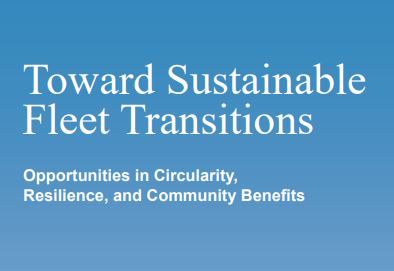New report outlines roadmap to fleet electrification, emphasizing resilience + community benefits
New report on how Arup is addressing the challenges and opportunities as we move toward fleet electrification
Converting fleet vehicles like buses, delivery and mail trucks, and rental cars to electric is critical to decarbonize transportation – one of the highest and most fossil fuel reliant industries worldwide. Despite a massive opportunity for impact, including federal funding and tax credits under the Inflation Reduction Act, challenges persist. Supply chain issues, grid capacity, expanded infrastructure, and making the business case for fleet conversions at a large scale is delaying the widespread adoption of electric fleets.
To address these challenges global sustainable development consultancy Arup, in partnership with Enel, a global renewable energy leader, today released a report that outlines a clear roadmap to realize the full benefits of a fleet transition. Toward Sustainable Fleet Transitions: Opportunities in Circularity, Resilience, and Community Benefits details a step-by-step guide to achieve fleet electrification drawn from EV specialists, fleet operators, and circulatory experts, including lessons learned, best practices, and key stakeholders to engage throughout the process. The report is designed for owners and operators to support in any phase of their fleet conversion journey.
The phases to achieve fleet electrification are as follows: strategic planning, building the business case, design and project delivery, operations and maintenance, and life cycle planning. Interesting takeaways from the report include –
● Create dedicated leadership roles for the fleet transition, i.e. Head of Energy Management, VP of Electrification, etc., to effectively create a long-term electrification vision and advance strategic goals.
● Build a strong business case by weighing the non-monetary benefits, including carbon reduction or improved air quality, and by collaborating with utilities and public charging infrastructure to identify synergies.
● Design infrastructure to future standards rather than current standards to ensure the model is forward-thinking and flexible.
● Plan for end-of-use and decommissioning early to extend the service life and value of equipment and effectively consider impacts throughout the process and ensure embodied carbon is not released at the end of product use.
Category: Electric Vehicles, Engines & Drivetrains, Equipment, Featured, Fuel & Oil, General Update, Green, News, Shop Stuff, Tech Talk, Transit News, Vehicles











